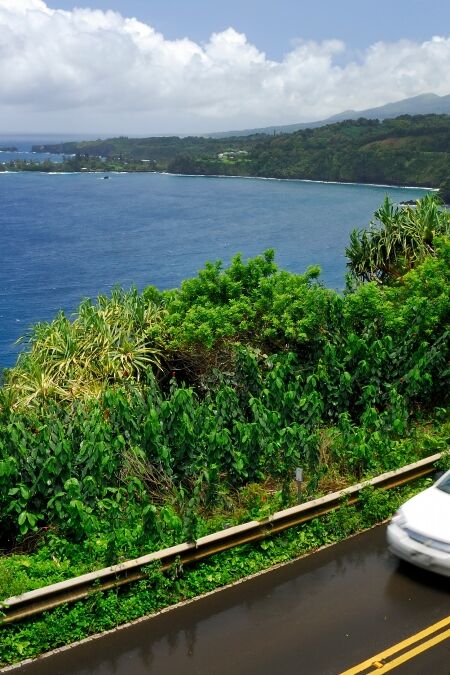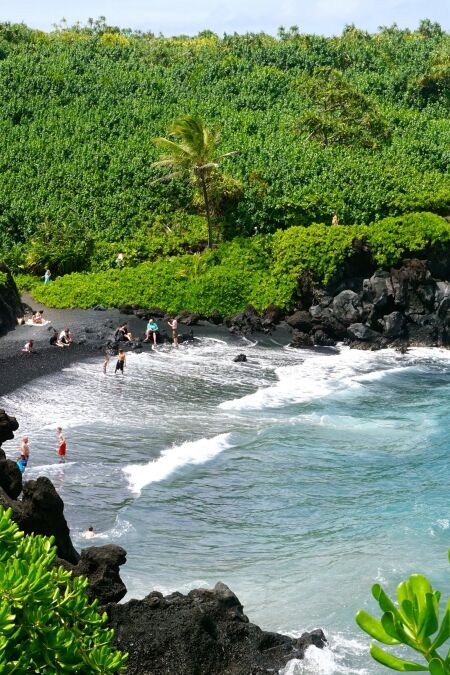Discovering the Road to Hana’s past enriches the experience of traversing this legendary road, offering a deeper appreciation of Hawaii’s heritage. Renowned for its breathtaking scenery and winding curves, this highway has become a must-see for tourists and a symbol of Maui’s natural beauty. Understanding the history behind this famous route reveals not only the ingenuity and determination required to build it but also the cultural and economic impacts it has had on the island.
The Early Days: Pre-Road to Hana
Before the construction of the Road to Hana, Maui’s remote eastern region was largely isolated due to its rugged terrain and dense vegetation. Early inhabitants relied on narrow footpaths and horseback trails to navigate the area, facing significant challenges in transporting goods and connecting with other parts of the island. The lack of a reliable transportation route hindered economic development and accessibility, making the need for a more efficient road evident. The concept of the Road to Hana emerged as a solution to these logistical difficulties, aiming to improve connectivity and support the growth of local communities.
The Construction of the Road

In the 16th century, King Pi’ilani of Maui initiated the construction of the Alaloa, a long footpath across East Maui, which was later extended into the Hana district by his son, Kihapiilani. This early path, about 4-6 feet wide and stretching over 138 miles, enabled travel and trade, with travelers using vine ropes to swing across streams. In the 1870s, modern construction efforts began with the creation of an unpaved road alongside the Hämäkua Ditch, essential for the sugarcane industry. Continued piecemeal construction in the early 1900s by plantations and the government laid the groundwork for the full road. The official opening of the Road to Hana occurred in 1926, with bridge construction continuing into the 1930s. By the 1960s, the road was fully paved, transforming into the scenic route we know today.
The Road to Hana: A Mid-20th Century
The mid-20th century (1940s-1960s) was a transformative period for the Road to Hana, marked by rugged terrain and a sense of adventure. Before the road was fully paved in the 1960s, travelers faced a rough, unpaved journey that demanded sturdy vehicles and an adventurous spirit. Early travelers navigated one-lane bridges, dodged potholes, and marveled at the untamed beauty of lush rainforests, cascading waterfalls, and hidden beaches. Initially, the road primarily served residents transporting goods and visiting family, with only a few intrepid explorers venturing into the untouched paradise. This era saw a slow start to tourism, with the road fostering local businesses and supporting the economy through agricultural transport. Travelers experienced authentic Hawaiian culture, encountering local farmers, artisans, and families living traditional lifestyles.
Cultural and Historical Landmarks Along the Route

The Road to Hana is dotted with cultural and historical landmarks, each offering a glimpse into Maui’s rich heritage. Significant stops include Wailua Falls, known for its stunning 80-foot cascade and role in ancient Hawaiian legends, and the Seven Sacred Pools at Ohe’o, a series of beautiful waterfalls and pools revered in local lore. Ke‘anae Peninsula showcases traditional taro farming, while Wai’anapanapa State Park, with its black sand beaches, holds deep cultural significance and is linked to the legend of Princess Popo’alaea.
Modern Developments and Popularity
While the mid-20th century laid the groundwork, it was the latter half that truly propelled the Road to Hana into fame. The 1960s saw the road fully paved, transforming it into a more accessible route for casual tourists. Guidebooks and early tourism efforts in the 1970s further highlighted its beauty, attracting adventurous travelers. The 1990s brought an ecotourism boom, drawing visitors interested in sustainable travel to its stunning landscapes. The advent of social media in the 2000s showcased breathtaking photos of waterfalls, hidden beaches, and lush rainforests, making the Road to Hana a must-see destination. Modern developments, including improved infrastructure and amenities, have enhanced accessibility but also introduced challenges like traffic congestion and environmental impact. Balancing tourism with preservation is crucial to maintaining this unique Hawaiian treasure for future generations.
Safety and Environmental Concerns
Increased vehicle congestion and parking issues threaten both traveler safety and the pristine condition of the natural landscape. Efforts to preserve the road’s natural beauty and cultural heritage include implementing sustainable tourism practices, regulating visitor numbers, and enhancing conservation efforts. Travelers are advised to drive cautiously, respect speed limits, and pull over only in designated areas to avoid obstructing traffic. Additionally, they should pack out all trash, stay on marked paths, and refrain from disturbing wildlife or cultural sites to help protect this fragile environment.
The Road to Hana Today

Today, the Road to Hana remains a captivating journey, renowned for its stunning scenery and cultural landmarks. The road and its attractions, including lush rainforests, cascading waterfalls, and historic sites, continue to draw visitors from around the world. Visitor statistics show a diverse mix of adventure seekers, nature enthusiasts, and cultural explorers, with thousands making the trip annually. For first-time travelers, it’s recommended to start early to avoid crowds, drive slowly to fully enjoy the sights, and plan for frequent stops to explore the many attractions. Bringing snacks, water, and a full tank of gas is essential, as services are limited along the route.
The Future of the Road to Hana
The future of the Road to Hana involves ongoing and planned projects focused on road maintenance and infrastructure improvements to enhance safety and visitor experience. Balancing increased tourism with environmental and cultural preservation remains a top priority, with initiatives aimed at sustainable tourism practices and protecting the natural landscape. As awareness of sustainable travel grows, the road’s popularity is expected to continue rising, solidifying its status as a significant and iconic destination in Hawaii. Efforts to educate visitors on respectful and eco-friendly travel will play a crucial role in preserving the Road to Hana’s unique charm for generations to come.
Uncover the Timeless Allure of This Legendary Drive!
The Road to Hana’s historical journey from ancient footpaths to a world-renowned scenic drive showcases its rich cultural heritage and significant economic impact on Maui. The road’s evolution highlights the ingenuity and resilience of the island’s communities. For those seeking a unique and immersive adventure, the Road to Hana promises an unforgettable exploration of Hawaii’s natural beauty and storied past.




